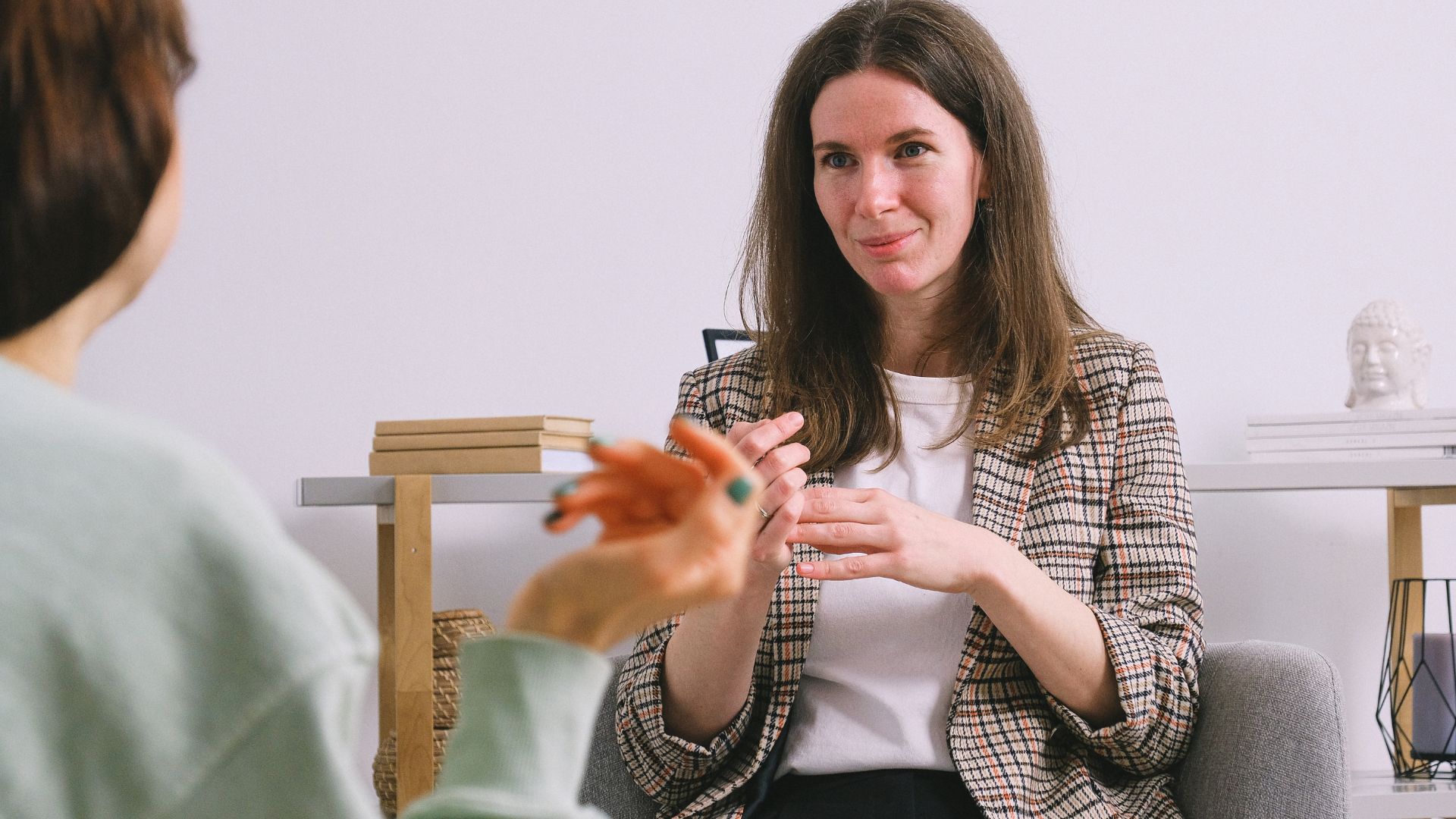It’s easy to mix up occupational therapy and physiotherapy. Both aim to improve how your body works and how you live day to day — and both are common supports under the NDIS. But they do very different things. One helps you recover movement; the other helps you use that movement to get through daily life.
If you or someone you support is finding things harder — like walking, dressing, cooking, or staying safe at home — you might be wondering which type of therapist to contact first. The answer depends on your goals, your current challenges, and the kind of support that fits your everyday routine.
What is physiotherapy — and what does a physio actually do?

Physiotherapy is about movement. If your body isn’t moving the way it should — whether because of pain, injury, weakness, or a health condition — a physiotherapist helps restore strength, control, and mobility.
Physios look closely at how your muscles, joints, nerves, and bones work together. When something’s out of balance, they find ways to improve how your body functions. That might mean reducing pain, increasing range of motion, helping you walk again, or rebuilding strength after being in hospital.
You don’t need a major injury to see a physio.
Many people work with a physiotherapist for smaller but ongoing issues like:
- Stiff joints or reduced flexibility
- Muscle tightness or weakness
- Poor posture or balance
- Chronic pain or fatigue
- Difficulty walking or climbing stairs
- Recovering from surgery (like hip or knee replacements)
A physiotherapist doesn’t just treat symptoms — they look at what’s causing the issue and build a plan to improve it long-term.
That plan might include:
- Guided exercises to strengthen specific muscles
- Manual therapy (like joint mobilisation or massage)
- Education on posture, pacing, or injury prevention
- Stretching routines or movement retraining
- Advice on walking aids, braces, or mobility equipment
In NDIS and community settings, physiotherapy is often used to help people:
- Build confidence when walking or transferring
- Improve endurance for daily tasks
- Manage physical changes caused by disability or long-term conditions
Think of physio as the groundwork. It helps your body work better — so you can move, stand, walk, and manage your day with more control and less pain.
What is occupational therapy — and how is it different?

Occupational therapy is about doing. It supports people who are finding everyday tasks harder — whether that’s getting dressed, preparing meals, brushing teeth, using public transport, or staying organised. When something disrupts daily life, an occupational therapist helps you adapt, build skills, and stay independent.
Where a physiotherapist focuses on how your body moves, an occupational therapist focuses on how you use that movement to function in real life.
OTs don’t just treat the body — they look at how your thinking, environment, coordination, routines, and energy all affect what you can do. It’s a practical, problem-solving therapy that works in the spaces where you actually live, learn, or work.
Here’s what an OT might help with:
- Using your hands to dress, cook, write, or feed yourself
- Managing fatigue, pain, or poor coordination
- Staying safe in the shower, kitchen, or community
- Using aids and equipment that support daily tasks
- Setting up routines that make life more manageable
- Supporting sensory needs, especially in children
- Addressing challenges with memory, focus, or executive functioning
Unlike physio, OT sessions often happen in your home or school. That’s because the therapy is built around how your space, tools, and routines are affecting your ability to live well.
In NDIS settings, OTs often complete:
- Functional capacity assessments
- Skill-building therapy
- Support with assistive technology and home modifications
- Reports for plan reviews or housing applications
Occupational therapy helps people regain control over their day — not just their body. If physio helps you move, OT helps you do something with that movement in a way that’s safe, meaningful, and practical.
Key differences between OT and physio
Occupational therapy and physiotherapy often work alongside each other — but they don’t do the same thing. One builds the foundation. The other helps you apply it.
Here’s the simplest way to understand the difference:
- Physiotherapy helps your body move better.
- Occupational therapy helps you use that movement to live better.
To make it even clearer, here are real-life examples:
| Scenario | What a Physiotherapist Does | What an Occupational Therapist Does |
|---|---|---|
| After a shoulder injury | Helps you restore movement and strength in the joint | Helps you dress, shower, or reach shelves using that arm |
| After a stroke | Builds strength, balance, and coordination on the affected side | Helps you relearn how to make a cup of tea, use a phone, or manage fatigue |
| With arthritis or joint pain | Teaches exercises to improve mobility and reduce pain | Suggests ways to manage daily tasks with less strain — like using special tools in the kitchen |
| Difficulty walking | Improves muscle control, posture, and step pattern | Assesses your home for safety, recommends a walker, or teaches safer ways to move around |
| In children | Helps improve balance, posture, or walking patterns | Supports handwriting, fine motor skills, sensory needs, or attention in the classroom |
In short, physiotherapists work on how the body moves. Occupational therapists work on what you can do with that movement once it’s there. If you want to improve strength or mobility, a physio is essential. If you want to use those skills to do more on your own, an OT will help you get there.
When does someone need both OT and physio?

Some situations call for both occupational therapy and physiotherapy — not one or the other. These two professions often work together to help someone recover, adapt, or stay independent.
Here’s how that looks in real life:
- After a stroke: A physiotherapist helps rebuild strength, balance, and mobility. An occupational therapist helps the person use that movement to shower, dress, prepare food, or manage fatigue safely.
- After major surgery: A physio helps restore physical movement and reduce pain. An OT helps set up the home with equipment or routines that make recovery easier.
- With progressive conditions (like MS or Parkinson’s): Physio helps slow physical decline, maintain range of motion, and improve stamina. OT supports energy conservation, routine planning, and use of aids.
- In children with developmental delays: Physio helps with gross motor development (like crawling, walking, or balance). OT helps with fine motor skills (like holding a pencil, self-care, or managing sensory input).
Using both services doesn’t mean you’re doubling up — it means each therapist brings a different skill set. Where physio builds the ability to move, OT translates that movement into daily function. They work side by side, often communicating closely, to make sure the person is supported from both angles.
In the NDIS, it’s common to see joint OT and physio involvement when:
- There’s been a major health event (stroke, injury, diagnosis)
- A child or adult needs ongoing therapy across different areas of life
- Safety, strength, and independence are all concerns at once
If you’re unsure which therapy to start with, you don’t have to decide alone. A good OT or physio will tell you when it’s time to bring the other in — because the end goal is always the same: helping you live more freely, confidently, and independently.
Related: What Does an Occupational Therapist Really Do?
Can you use NDIS funding for OT and physiotherapy?
Both occupational therapy and physiotherapy are funded under the NDIS. They support different parts of daily life, and in many cases, both are included in a participant’s plan.
Here’s how it works:
- Occupational therapy is usually funded under Improved Daily Living
- Physiotherapy can be funded under Improved Daily Living or Improved Health and Wellbeing
You don’t have to choose just one. If both services relate to your NDIS goals and are reasonable for your situation, you can use funding for both.
Here are a few examples of how it works in real life:
- After an injury, physio helps rebuild strength while OT helps you manage daily tasks like showering or cooking
- For a child, physio might support posture and movement while OT supports sensory regulation and learning skills
- For an adult with chronic pain or fatigue, physio can improve mobility while OT provides strategies to conserve energy and avoid flare-ups
You don’t need a diagnosis or complex report to get started. If your plan includes funding for therapy and you’re working toward functional goals, you can contact a provider directly. A good therapist will always tell you if your goals would be better supported by a second professional — and help coordinate that care if needed.
How to decide what’s right for you

If you’re unsure whether you need occupational therapy or physiotherapy, the first step is to look at what’s actually becoming harder in your day.
Ask yourself:
- Is it difficult to move, stand, walk, or lift something?
- Or is it difficult to use that movement to do everyday things like dress, cook, or stay organised?
- Do you feel unsafe, tired, or frustrated during daily tasks — even if your strength seems okay?
Here’s a simple way to decide:
- If your body isn’t moving well, start with physiotherapy.
- If your day isn’t running smoothly, start with occupational therapy.
- If both are happening at once, you’ll likely benefit from both services working together.
You can also speak with:
- Your GP or treating health professional
- Your support coordinator or plan manager (if you have NDIS funding)
- A therapy provider like Zenzability, who can guide you based on your needs and daily challenges
In many cases, occupational therapy is a good place to start. OTs often see the bigger picture of how your home setup, energy levels, physical ability, and routines all connect. If they believe physiotherapy would also help, they’ll recommend it and help coordinate that support.
No matter where you begin, the important thing is this: you don’t need to keep pushing through tasks that feel too hard. Help is available — and the right therapist will meet you where you are.
Conclusion
Occupational therapy and physiotherapy are both valuable, but they’re designed to help with different things. Physiotherapists support your movement — helping with strength, mobility, and physical recovery. Occupational therapists support your daily life — helping you do more, with less effort, at home, at school, or in the community.
If you’re living with pain, fatigue, or any challenge that’s making everyday life harder, there’s no need to figure it out alone. You don’t need a perfect description of what’s wrong — just a clear sense that something could be easier.
Zenzability provides NDIS-funded occupational therapy services across Sydney. If OT is the right place to start, we’ll help you get moving. And if physio would help too, we’ll make sure you’re connected with the right support.

